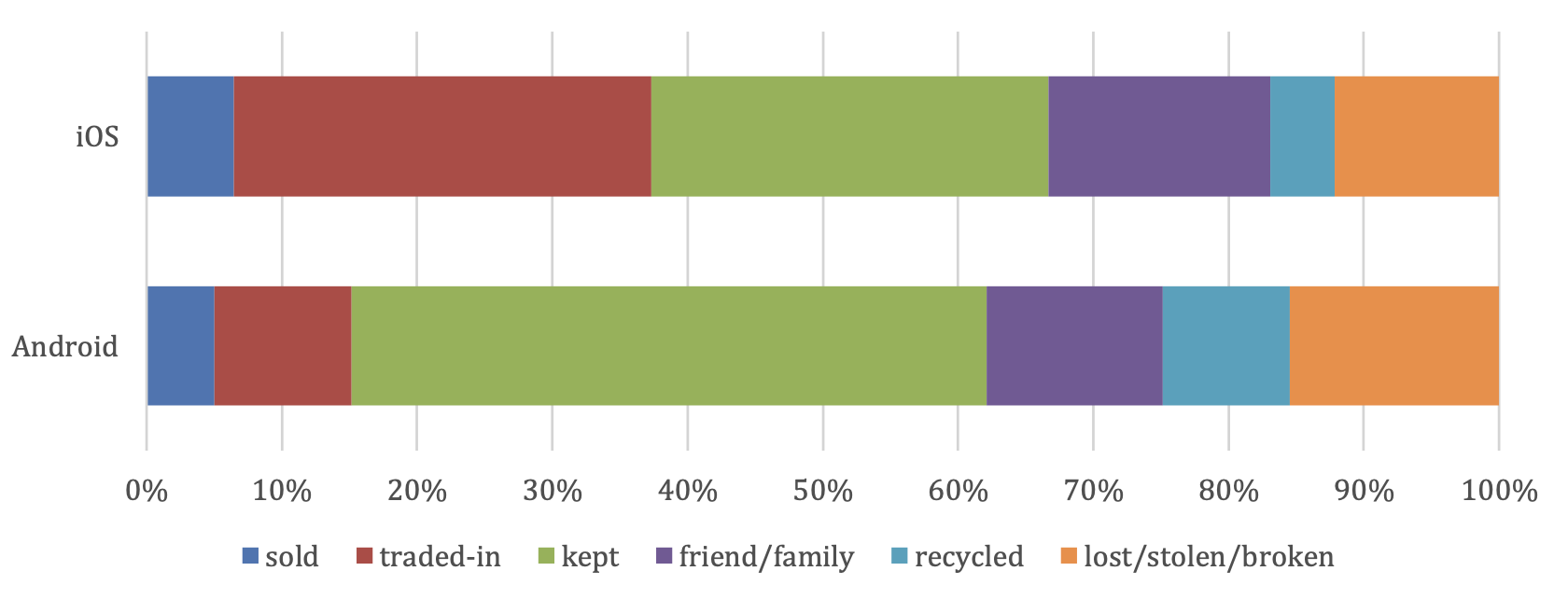
As we are only hours away from the official announcement of iPhone 13, a new report from Consumer Intelligence Research Partners (CIRP) on Monday revealed some interesting information about “what happens to old smartphones.” The research includes data on the number of iPhone users who sell or trade in their devices compared to Android device owners.
Based on the research, CIRP found that used iPhones are usually found in better condition when compared to used Android phones. For instance, more than 65% of iPhones being used for 12 months are found with the display in good condition, while this number drops to less than 60% when it comes to Android smartphones.
Interestingly, the situation changes when battery conditions are considered. After one year, only 23% of iPhone users reported that their phone’s battery lasted a full day without recharging, while 30% of Android users were still able to keep their smartphones unplugged for a full day after 12 months.
Luckily, the number of devices that become unusable after one year is quite low. For both iPhone and Android phones, less than 10% of users have completely broken their phones after a year, while less than 20% have noticed that the battery lasts only a few hours. CIRP notes that as phones become more durable, people take longer to exchange them for a new one.
Most retiring phones are in good condition, with useable displays and batteries that last for all or most of a day. Consequently, many previous phones are sold or traded-in, passed along to a friend or family member, or saved for potential future use.
But what exactly do people who upgrade their smartphones every year do with their devices? According to CIRP, less than 10% of iPhone or Android users sell their old phones. While the vast majority of Android users just keep their previous smartphones, almost 30% of iPhone owners give them away in trade-in programs.

Apple has been increasingly pushing its iPhone Upgrade Program, and yet, other stores and carriers often pay more for used iPhones than equivalent Android phones. It’s worth mentioning that the survey was based in the US, so the results could be different for other regions.
Author: Filipe Espósito
Source: 9TO5Google



